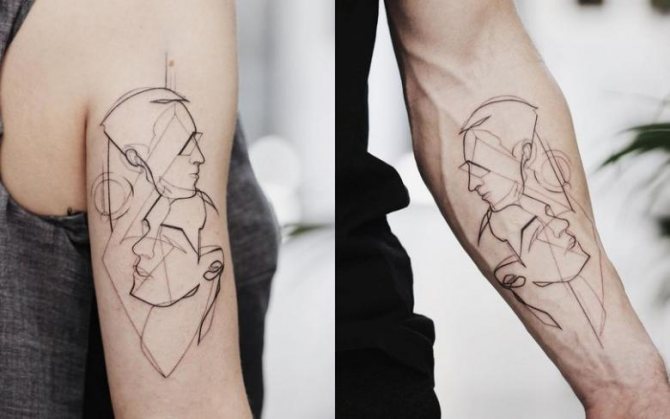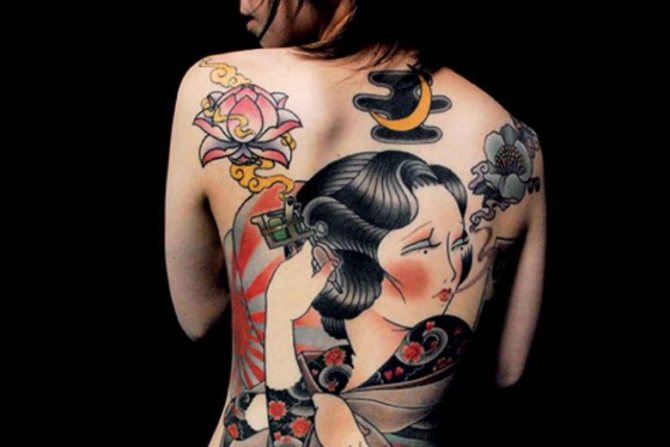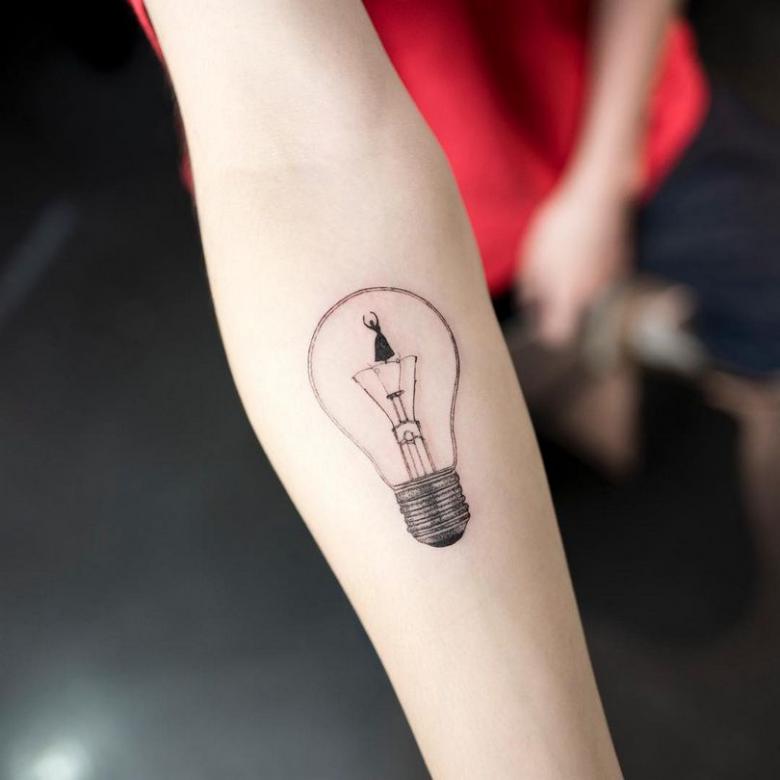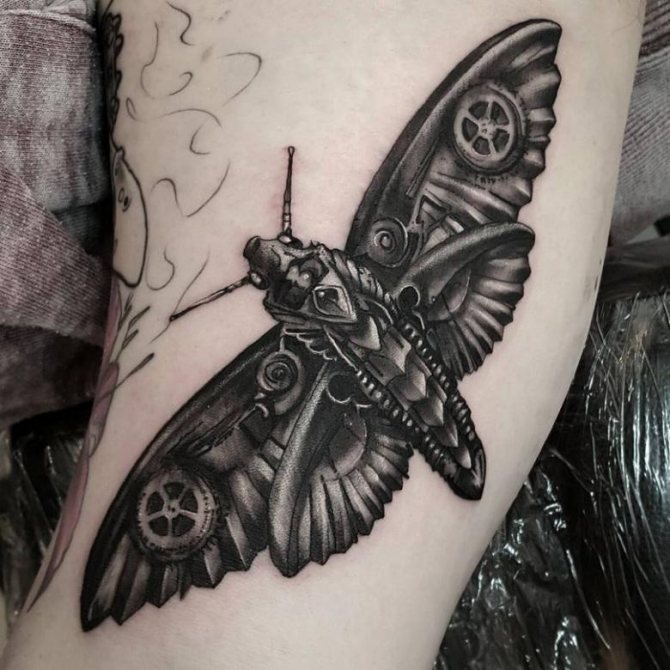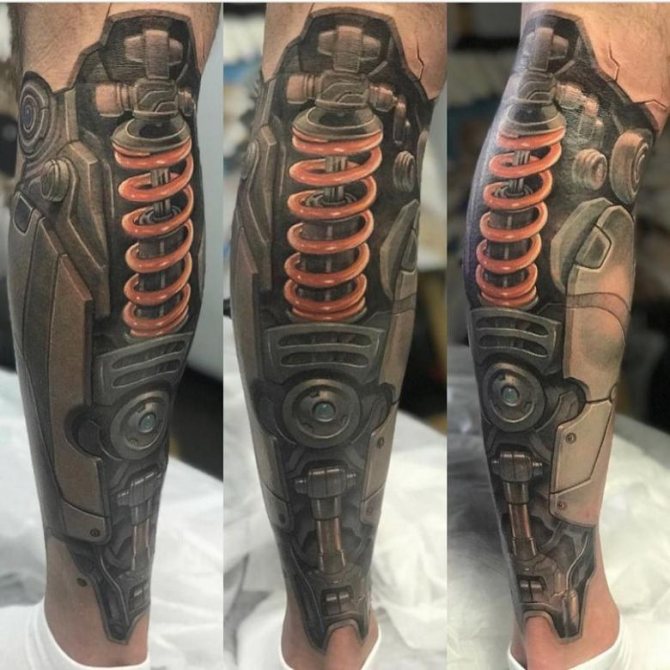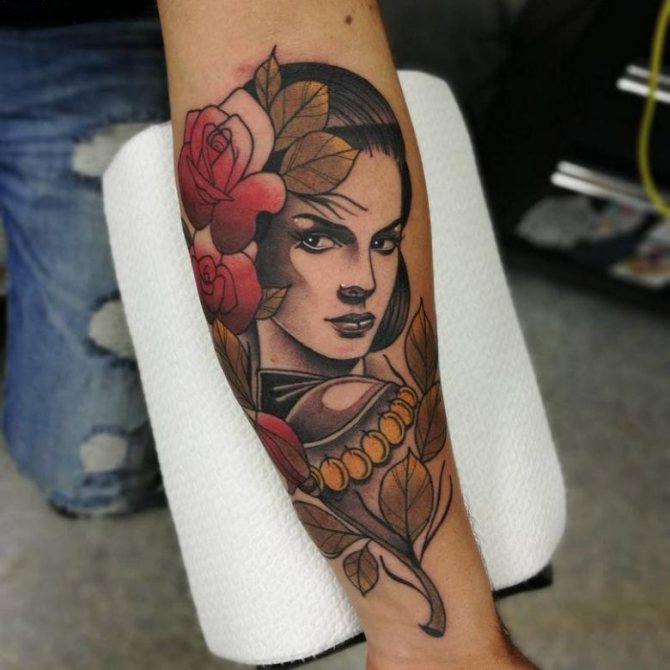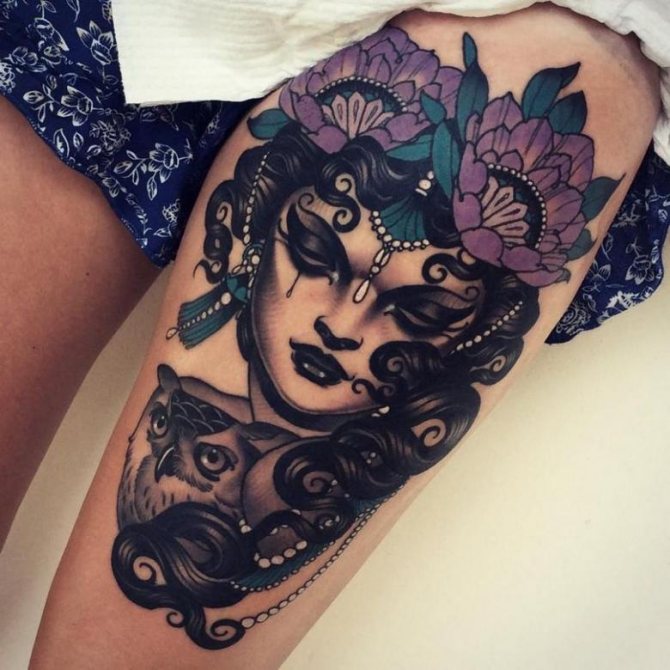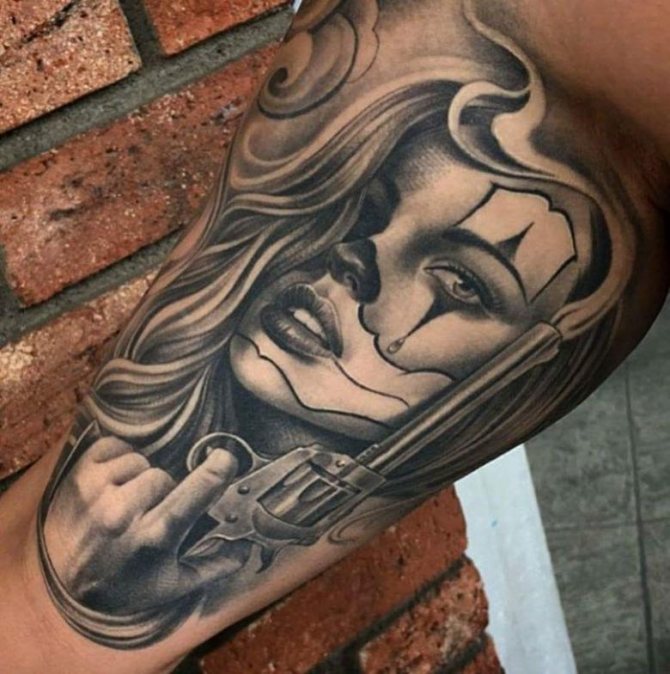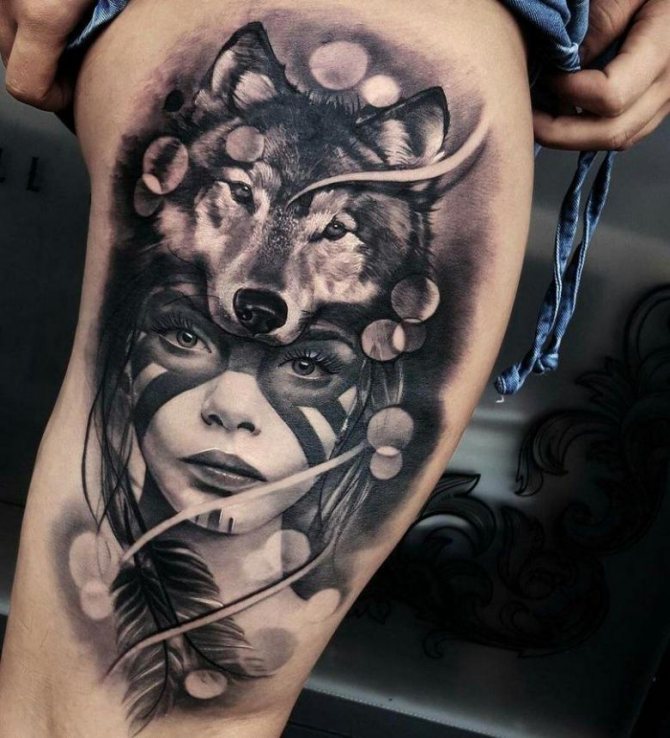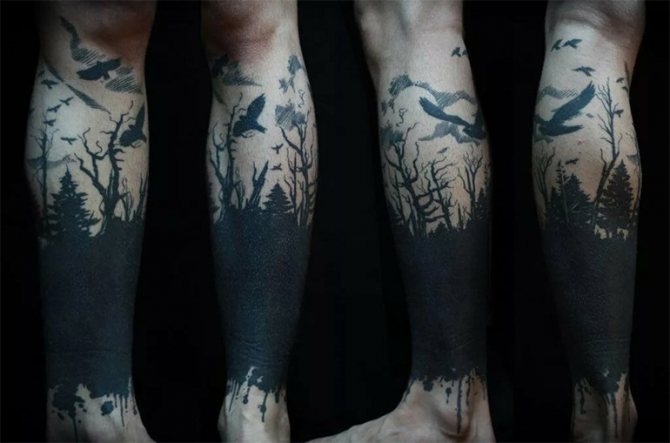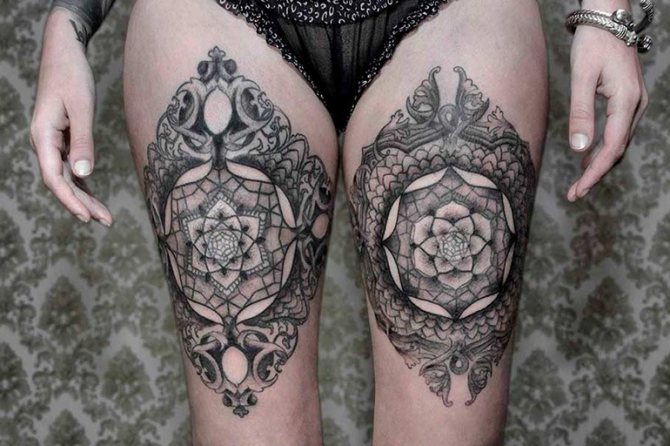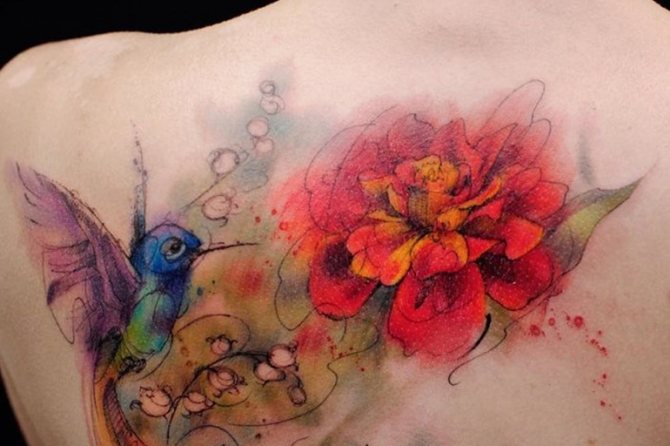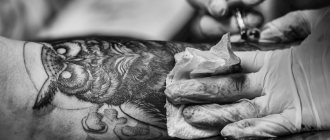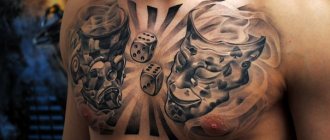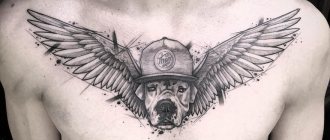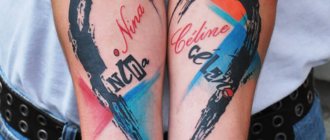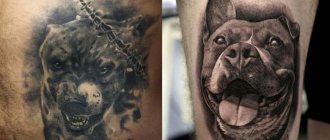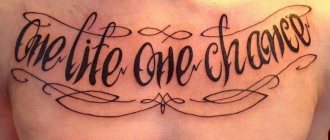- 3635
- 0
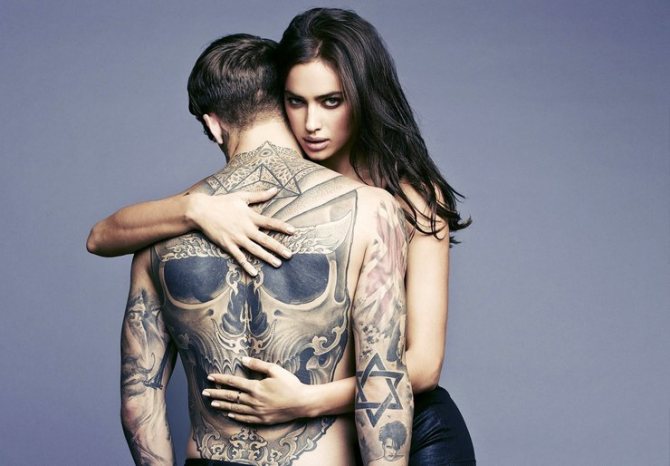
Nowadays, it is difficult to imagine a person who has never heard of tattoos. Most young people have even a few natal drawings, do not disdain them and those who are far over 40 years old. There are many styles of tattoos, each of which has its own meaning.
Tattoo style infographic
Each drawing on the body contains secret information. In ancient times, people used ornaments, inscriptions, patterns to inform others of their status, military merits, lineage. Today it is a way of self-expression, emphasizing personal qualities and achievements.
So, ethnic, tribal ornaments help men to show their strength and power, and subtle, elegant minimalism, linework, lettering - to emphasize subtle taste.
You can create your own patterns, mixing directions and filling the picture with its own deep meaning.
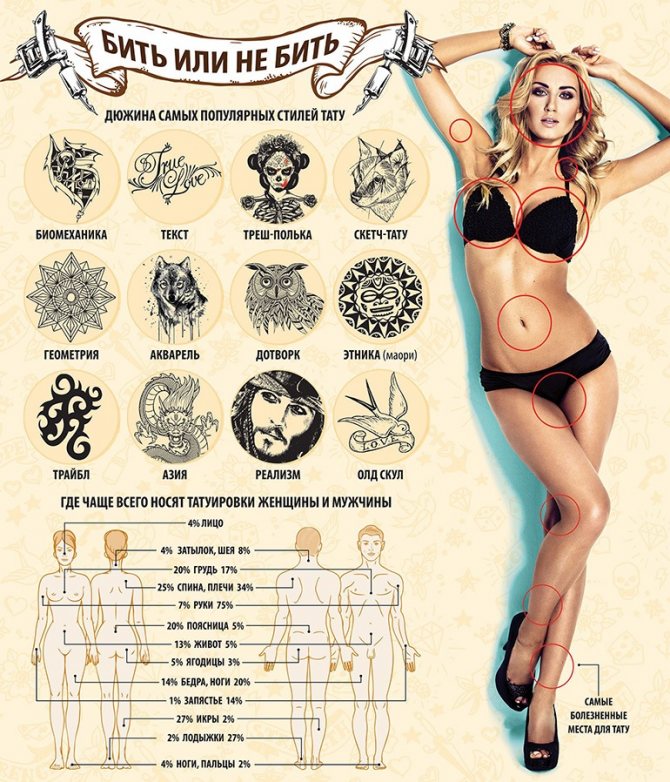

Contrasting Style Polynesia
So, what are the styles of tattoos in general? Some of them originated in the 19th century, but there are also relatively young styles. Following the timeline of tattoo development, it is probably worth starting with the Polynesian style. It is believed that the inhabitants of Polynesia were the first to decorate their bodies with tattoos that had a sacred meaning. The multitude of elements, intertwined and crossing each other, reminded something of a wood carving. The kind that occupies a large part of the body, representing a whole composition.
As a rule, a Polynesian of high status was bound to have a tattoo, and the larger it was, the higher his position in the community was considered. Nowadays, this style has not changed externally, continuing to impress with the beauty of perfect lines and aesthetics. But it has already lost its deep meaning, although it gives mystery to the bearers of such tattoos.
Types of tattoos in different areas
Modern people more and more often resort to the services of tattoo masters for the realization of various ideas. Studying the natal images, you can learn a lot about the lifestyle of the owner, his hobbies.
Artists prefer bright, original and at the same time complex tattoos in the style of baroque, watercolor, realism with photos of idols, graphics, old and new skool. Artists leave the memory of important dates on their bodies. Musicians love the boldness and expressiveness found in blackwork, biomechanics and organics, ornamental, tribal, etc. In life, rarely can anyone dare to apply a "sleeve". Office workers prefer minimalism, ornaments and their understyles more.
In the culture of body painting, it doesn't matter who a person works for. The most attention is paid to his inner state, feelings, character.
With the help of encrypted symbols, you can protect yourself from negativity from the outside, or, on the contrary, acquire an assistant in the development of talents.
Differences and similarities of female, male tattoos
Currently, there is no clear difference between female and male tattoos. But if for a woman a body drawing is an aesthetic beauty, for a man it is important the meaning hidden in it.
In the past, male tattoos demonstrated the wearer's affiliation with a clan or tribe. At the same time, women applied the drawing as an ornament. Also men's tattoo styles are more aggressive in nature. As for girls, they express grace and beauty.
Also, the difference includes the size of the tattoo. Men's jewelry is characterized by a large volume. Depending on the choice of body part, they try to fill the space completely - back, leg, elbow. Girls, on the contrary, depict a small detail on the shoulder, wrist or stomach.
Description of styles with examples
Decorating the body with tattoos is a fashionable way of self-expression. The figure carries a semantic load and has a magical effect on the person, so it is important to choose the right way of application. Today there are many "pure" and mixed styles, which have their own distinctive features and characteristics.
The geometry of minimalism
Simplicity, elegance, conciseness. The composition has a small scale, clear geometric lines and shapes. A limited number of colors is used for execution. There is no place for pretentious elements, brightness and extreme.
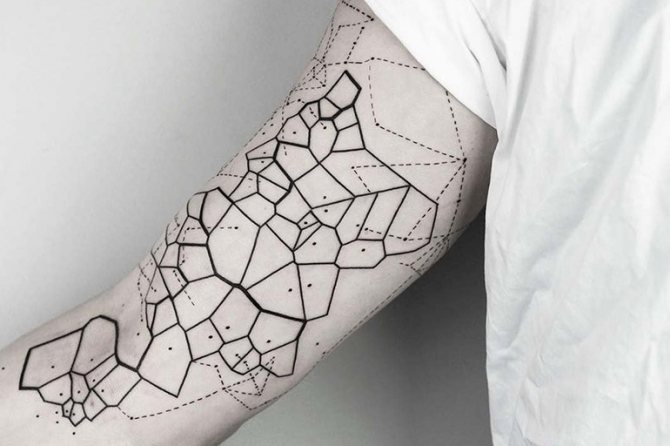

The main themes are animals, plants, silhouettes, symbols, diagrams with dots, lines. The image of the barcode is very popular.
There may be different sizes. The drawings consist only of outlines, are not filled with color. This style is suitable for people who do not want to turn their body into an artistic canvas. A woman with a neat tattoo can emphasize her fine taste, and a man - chastity.
Linework
"Working with lines" is the literal translation of the name of a relatively young trend. It was born about 10 years ago and quickly gained the love of tattoo fans, especially girls. The work uses lines that are combined into whimsical, fancy or small concise patterns. This is a great solution for fans of minimalism and biomechanics.
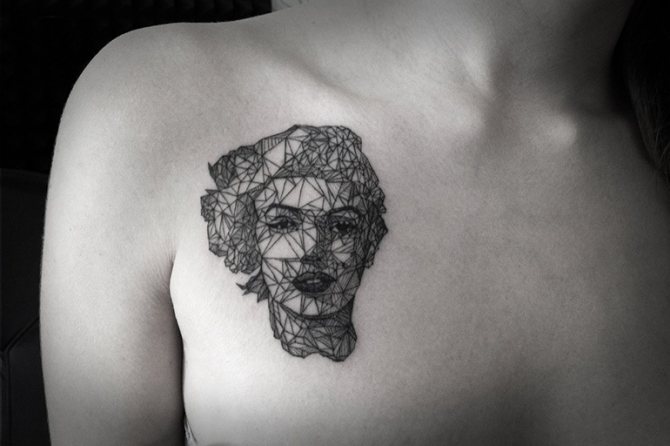

Popular motifs in linework are flowers and animals. For fans of exclusivity, characters from cartoons and feature films will do.
The color scheme can be rich, but linework done in black or red looks more advantageous.
Classic Realism
One of the hardest styles in terms of technique. The drawing is transferred from a photo of a person or an illustration from a magazine, book. The main distinguishing features of the style are uniqueness, realism. The picture must "live", "breathe".
Only the master, who has high artistic skills, is able to do the job qualitatively. Every detail, every stroke is being worked through for hours. Tattooist must be able to properly impose the natural tone on the portrait in order for it to look as realistic as possible.
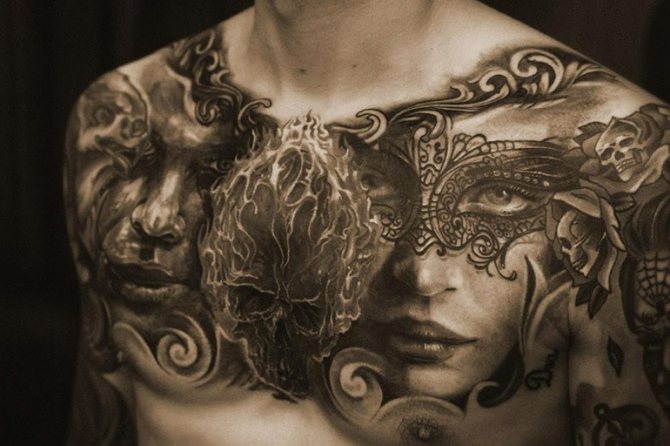

Any color scheme is suitable for execution, including shades of gray and black.
Tribal and Oriental
The ancient art of body decoration with drawings is a popular way to express your inner world. The most profound meaning and mystery is contained in the tattoos of "tribal" and oriental styles.
Treble originated in ancient times. With the help of ornaments the aborigines from the islands of Polynesia conveyed the connection between the spirit and the physical body. The main purpose was to reveal the character of the wearer. Patterns that repeat the curves of the body are suitable for men. The color scheme can be any, but the best look lines of black and gray.
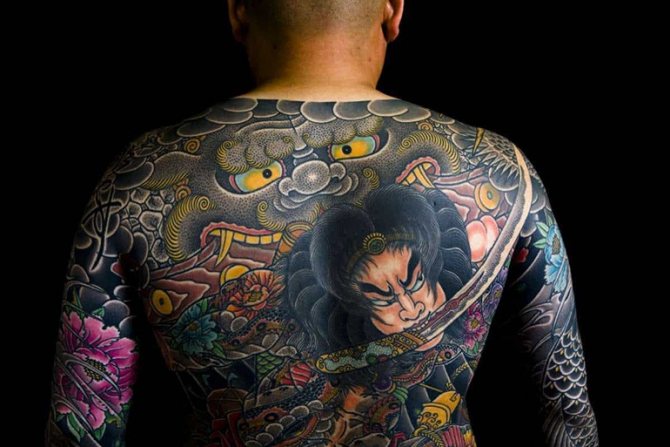

Oriental Oriental suggests decorating the body with bright images of geishas, dragons and famous warriors, complemented by beautiful details of flora and fauna - butterflies, birds, lotus, sakura. The main picture is composed of incompatible elements, which makes it unique. Gold, red, black, green and other colors are used for the work.
Steampunk
A mysterious, specific style. The tattoo depicts the recent past - steam engines, clockworks, levers, gears, metal blackened by time. The overall picture looks a bit bleak, but impressive. It tells of an alternative version of the development of mankind with a touch of dystopia.
Elements are depicted on the arm, chest and other parts of the body. It gives the impression that the mechanisms were hidden inside, but because of the ruptures in the skin became visible.
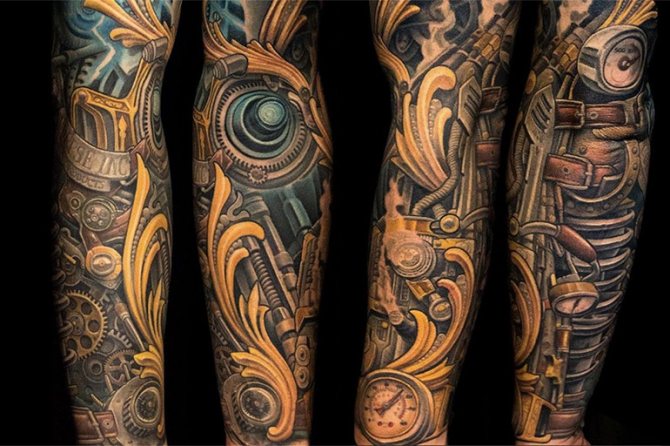

The drawing is done in a black and white palette, but it is not forbidden to fill in the details with different colors.
Biomechanics
Scientific discoveries, technological advances are reflected in the world of tattoos. The main theme is that the man is an extension of the machine. Iron bars are built into the body instead of bones, organs are replaced by microchips and intricate devices. The main subject is torn flesh, from which buttons, chips, springs and other metal parts peek out.
There is a whole list of sub-styles in this direction: cyberpunk, Hi-tech, Steam punk. All drawings require a high degree of professionalism from the master to work out every detail extremely realistically. To "enliven" the tattoo, the brightest possible colors, highlights and shadows help.


American Chicano
This style originated in the United States in the 40s-50s of the last century. Images were used to indicate a person's affiliation with a criminal structure. Decades later, the mood in society changed and tattoos became popular among ordinary people.
Black and gray colors are used in the drawing, a riot of colors is unacceptable. The main subject line is weapons, death, gambling, religion, money. Images of young girls with ethnic decorations on their faces are especially popular with Chicano fans. You can also put the names of loved ones, dates, and wise sayings.
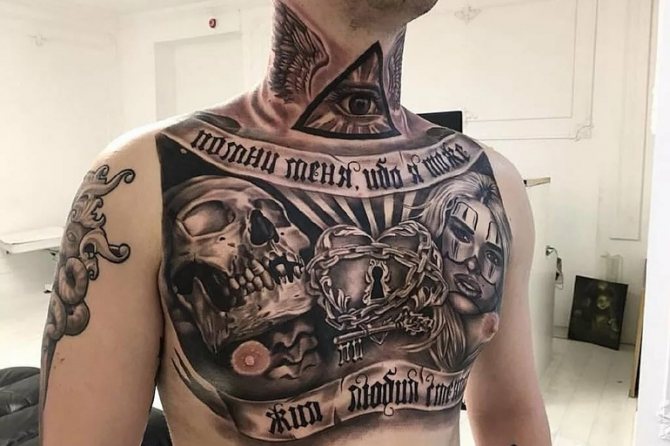

Old and new skool.
Bright, interesting directions of body painting. Both use bright colors, bold black outlines, and voluminous lettering.
The oldest style is old-school. Back in the 19th century, sailors painted images of anchors, skulls, ribbons, angels, roses, mermaids, and hearts on their bodies. Each symbol had a special meaning. The new skool is a more progressive, developed continuation of this style. It is not just a picture, but an unfolded storyline. Characters from comic books and cartoons are added to the primitive drawings.
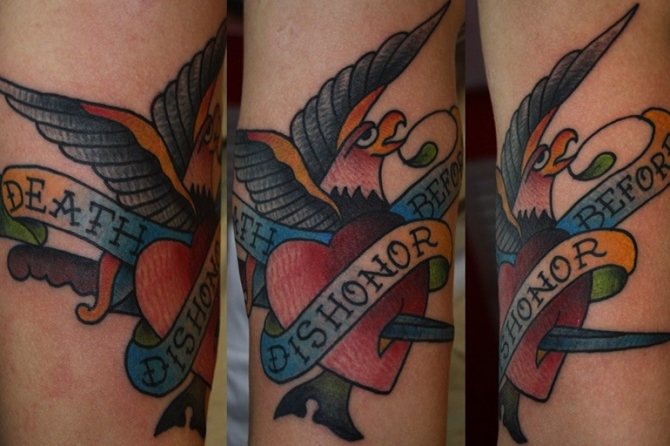

Thrash Polka
Tattoos for people who do not accept platitudes and rules imposed by society. Repulsive, frightening style, in which unpleasant, horrifying pictures are applied to the body. They symbolize corpse decomposition, death, fear, vulgarity. Black and red tones are used to enhance the perception.
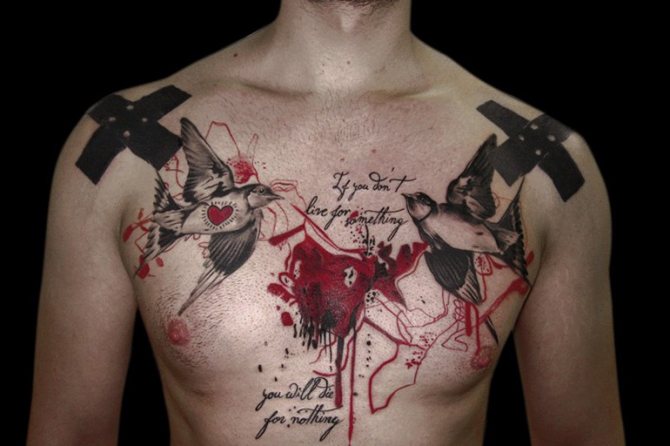

This type of tattoo suits strong individuals who are not afraid to stand out from the crowd. Expressive images open their eyes to empty, false values.
Organic
Fantasy patterns containing abstract elements. The style is closely related to biomechanics, but its elements are taken from the animal, natural world. Attracts with a bright palette of colors, 3D effects.
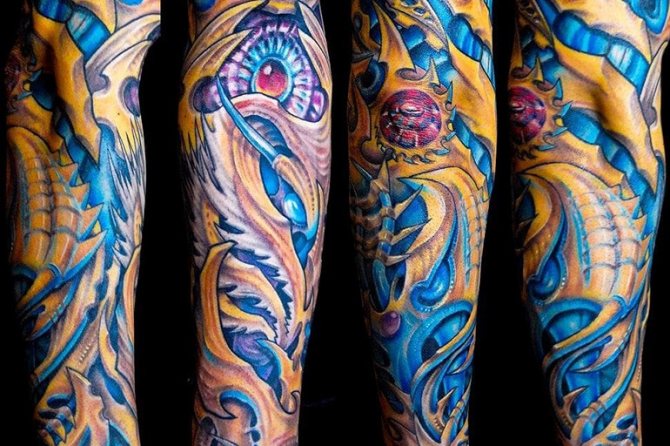

The value is determined by the chosen theme. You can use images of rocks, plants, fruits, sea creatures, animals. To enhance realism, the effect of "torn skin" is used, when the details are viewed from inside the body.
Dotwork
A technique for creating a body painting by dots. Works are large in size, as small ones look sloppy and ugly. The style is complex, as different geometric shapes are most often used. Punctures create everything - intensity, brightness, color density.
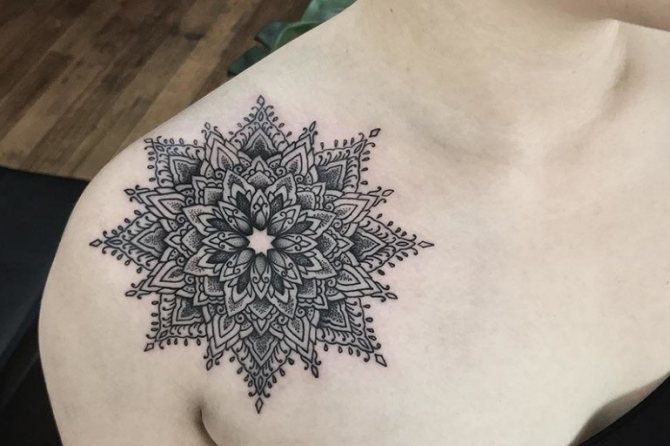

The main colors of the Dotwork style are red and black. They contrast harmoniously with each other and emphasize the individuality of the pattern.
The dots allow you to create any complexity and shape of patterns.
Ornaments
An ancient Polynesian style that has survived to this day unchanged. Once ornaments were painted on the bodies of priests, leaders, brave warriors, and today they can be applied by anyone.
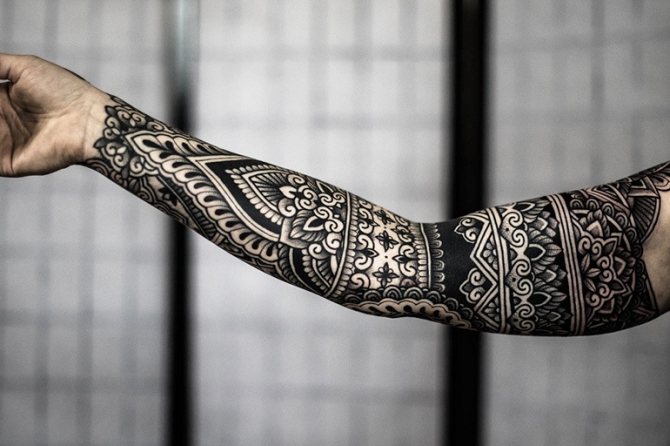

Distinctive features - clear lines, reminiscent of wood carvings. Spirals, weaves, knots, a Celtic cross, geometric figures are used to create a picture. Also the ornaments can take the form of plants and animals - sharks, owls, ferns, the sun, the moon. The color is black.
Traditional and neo-traditional.
Options for tattooing techniques with traditional subjects. The direction of traditional is peculiar primitiveness. Nakolka simple in execution and does not carry deep meaning. This is commonplace pictures, symbols and words. Common themes are heart with arrow, ship, anchor, horseshoe, birds, weapons, mermaids, predators, skulls, etc.
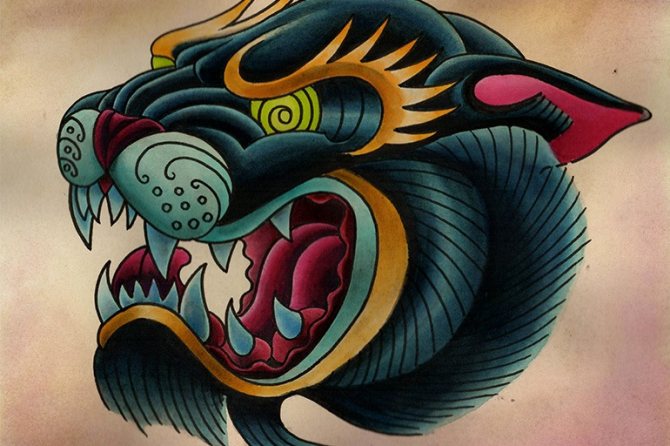

Neo-tradition is a continuation and improvement of the previous style.
Masters gave a new life to the usual patterns, complementing them with clear facets and bright colors.
Blackwork
The option for lovers of strict black and minimalism. Blackwork is chosen by people who faced negative experiences in the past. The disadvantage of the style is the inability to fix the dark, dense design in the future.
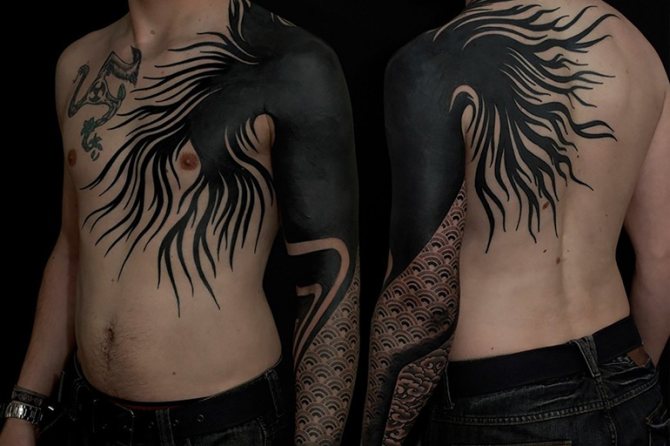

Geometric shapes and patterns are used to create the tattoo, and certain areas of the body are filled with all-black paint.
Handpoke
Distinctive features - a monochrome motif or deliberately slanted lettering. The application does not require expensive professional equipment, you can paint by hand with paint and a needle. This is not a style, but a way of performing the tattoo.
Authentic pictures favor simplicity of the sketch, primitive execution, ironic subjects, dark, mostly black colors.


Handpoke is popular with teenagers and people prone to self-irony.
Watercolor Tattoos
The style was developed by the talented artist Amanda Wachob. She managed to create a drawing on the body as if it was drawn with brushes. Not all masters manage to be equally virtuoso in this technique. It is a high art.


Tattoos can be performed in any colors and tones. Various subjects are suitable for the work, from simple patterns to full-length paintings.
Sketching
Sketching is a quick drawing. It is important to embody the idea without sketching the details, producing the effect of a sketch sketched with a pencil. The pattern looks deliberately blurred in places, sloppy, with light shading inside.
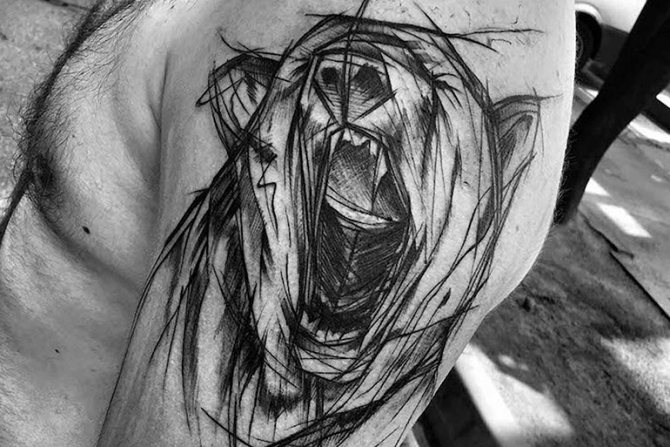

Birds, animals, mountains, flowers, woods are suitable for the realization of the sketch. The picture should look "alive", realistic.
The main advantage of the sketching style is the ability to make a clearer outline, add new strokes, color, refining the original drawing to a more voluminous, new, vibrant picture.
Graphic Images
One of the brightest, most expressive styles, which has a clear definition and rules of execution. All images are monochrome, black, and are recreated with line drawings, as in an engraving. The result is characterized by stiffness, clarity.
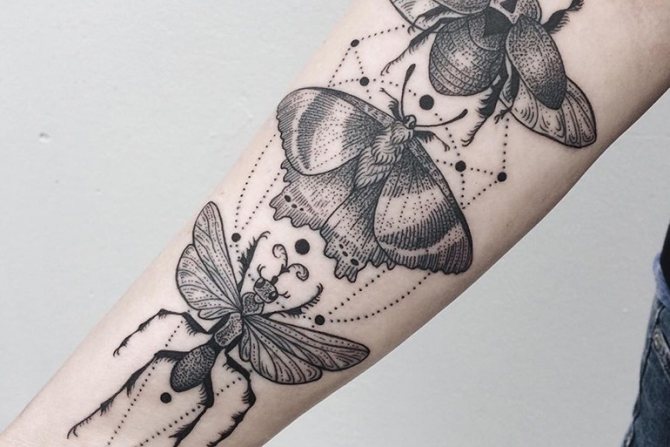

There is no place for halftones in the graphics, only color saturation is acceptable here. In this style expressively looks animals, insects, trees, flora. Talented craftsmen manage to put people's faces on the body.
Lettering (inscriptions).
An artistic tattoo in the form of a phrase, text or word. Calligraphy is highly popular with girls. The variety of fonts allows to realize any creative idea.
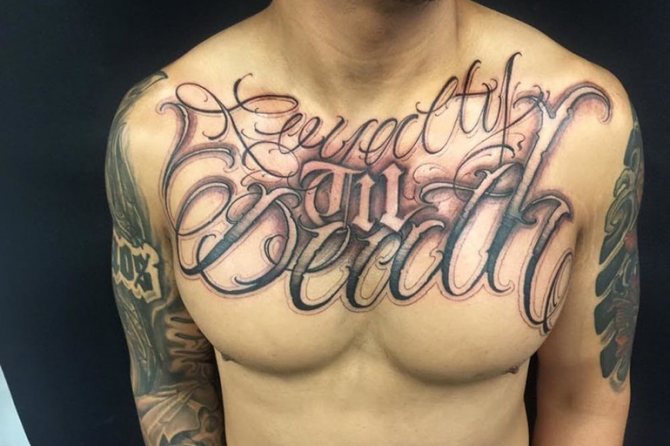

The inscription looks equally beautiful on a strong man's back and a thin woman's wrist. When choosing, you should be careful to consider the meaning of the picture.
Foreign statements should be studied carefully and the translation should be known.
Tribal Maori.
The style has been around for centuries. It is named after the Maori tribe. Tattoo in the form of an animal, spiral and other patterns helped protect the owner during the hunt, gave him wisdom and attracted good luck. In the images on the body could read the history of the life of the person: to know the ancestry, status in the tribe, profession.
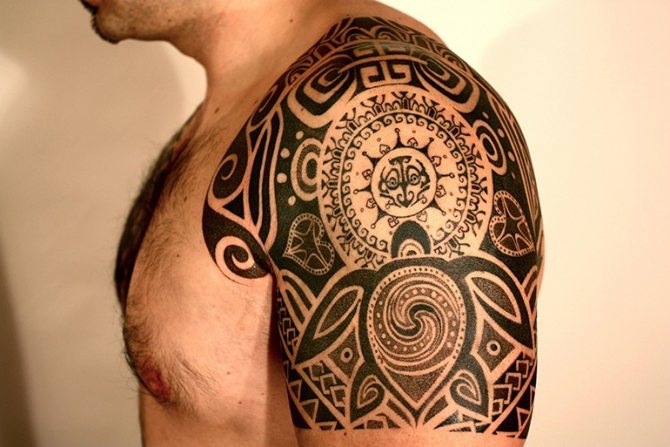

Popular subjects are shark, turtle, sun, lizard, dolphin, stingray, spiral. They all have sacred meaning; if you create a mixed pattern, you can protect yourself from the evil eye, bad luck. The color of the pattern is black.
Celtic patterns.
The Celts are rugged, independent, warlike people. They left a lot of mysterious patterns on weapons and rocks, which are intertwined with human faces and images of animals. The lines have no end and no beginning.
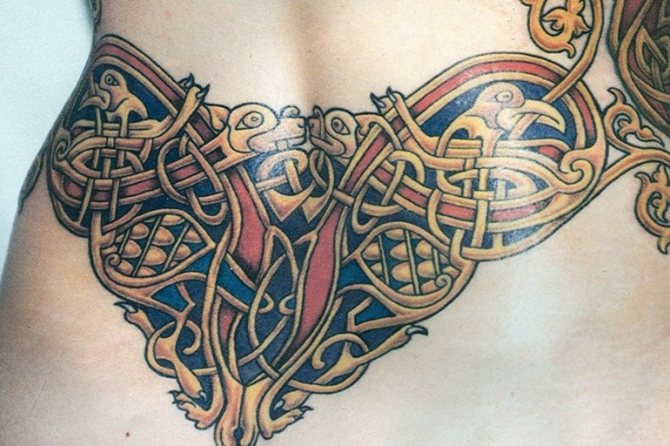

Popular Celtic tattoos look like a four-leaf clover, Celtic cross, tree of life, dog, boar, dragon, deer, horse, etc. Complex, macabre pictures look harmoniously on the shoulder and forearm of men, but girls also often give preference to this style. Fascinating beauty is combined with mystery.
Haida
A style of body art that came into the modern world from the Indian tribe of the same name. Tattoos have distinctive features. Only 4 colors are used for execution: red symbolizes blood, black symbolizes the earth, green symbolizes the vegetable world, blue symbolizes the sky. Most often, masters combine 2 colors, a rare phenomenon - a combination of 3, 4 shades.
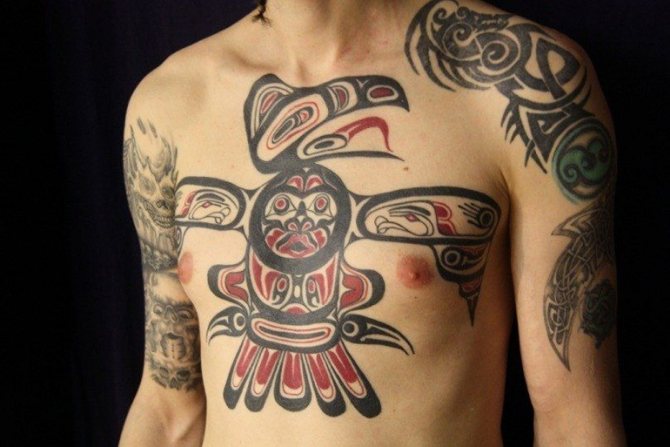

Popular subjects - totem birds, animals, fish. In the drawings, a clear geometry is traced, but there are also many smooth lines.
Abstract Patterns.
Abstraction is a way to make the world more beautiful through mysterious symbols. You can use different geometric and color reconstructions to express yourself. This genre has no limitations, the main thing is self-expression.
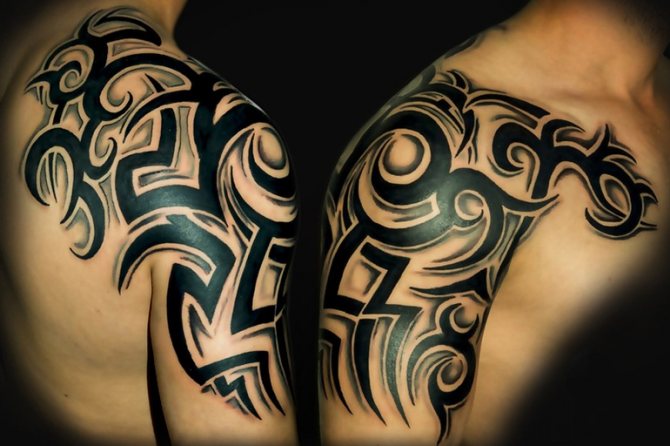

In the female version, abstract tattoos have the appearance of intricate jewelry. It can be a thin weave on the arm or a full-fledged "sleeve". Men like large drawings that emphasize the beauty of the embossed body.
Baroque
The Italian style challenges the strict directions of artistic tattooing and calls to move away from the canons, to give preference to the freedom of thought. A distinctive feature is the combination of incongruities. For example, bizarre figures decorated with strange, blurred colors. The sketch can consist of both lace ornaments and simple elements.
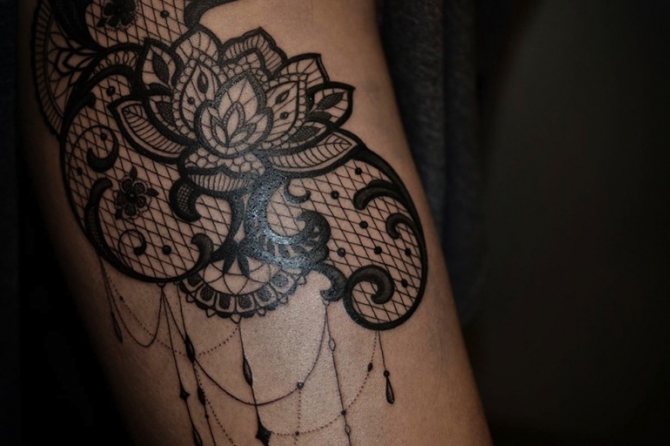

Unusual pictures look beautiful on the back or under a woman's breasts. Also popular places of application are legs, arms, wrists.
History of tattoos
Tattooing is the most ancient cultural phenomenon, which originates in primitive times. In those distant years, our ancestors actively decorated their bodies with symbolic drawings, which had a special meaning, were an element of intimidation of the enemy, a conventional designation of primitive clans, and so on. Many drawings of those times are reflected in the modern body art, which includes a variety of stylistic directions.
The history of tattooing in Europe is somewhat obscure. Each language in the European group had its own word for body art. For example, the Dutch called tattooing "drawing by nakolka". The Russian word "nakolka" also has quite a clear meaning. In English, a word combination meaning "painted with a dotted line" was used in relation to tattoos, which alludes to the tattooing methodology of those times.
The discovery of a new continent, where local civilizations actively used body painting for self-expression and ritual practices, gave rise to the nascent culture of body art. Initially, the word "tattoo" was used only to refer to the drawings applied by the inhabitants of Tahiti. After the voyages of the navigator Cook, the term "tattoo" spread throughout Europe and contrastingly imprinted in the culture of the time.
In the middle of the 19th century, the term "tattoo" was first used in a scientific environment. After that, the word spread throughout the civilized world.
On the territory of modern Russia tattoos existed in the time of the ancient Russians. Some evidence from the 10th century suggests that our pagan ancestors adorned themselves with beautiful tattoos. Unfortunately, such evidence is scarce and it is impossible to say how popular tattoos were in Russia at that time. Nevertheless, the beginning of the 20th century was marked by the revival of the tattoo culture. Such drawings were popular among sailors, people who were in close contact with other cultures like no other. Also an important impetus to the development of body art was the criminalization of society at that time, the dominance of thieves' culture and other phenomena of the prison environment. During the Soviet Union, tattoos could also be found among the army. Some tattoos had political undertones and adorned the bodies of relevant figures, oppositionists and rebels.
Today, tattoo culture is gaining popularity not only in Russia but all over the world. A dozen years ago, body art was the destiny of the informal and romantic. Today, a variety of images can decorate the pumped up body of a marketing director, designer or even a public businessman. And these pictures are not always small and inconspicuous. Inscriptions, symbols, patterns and full-fledged paintings now cover the bodies of a wide variety of people from the most diverse social strata. Today, the tattoo has become one of the brightest ways of self-identification and expression of one's inner world. Guys with battered sleeves and girls with elegant patterns on their thighs have dissolved our society with their authenticity.
New trends in tattoo styles
Fashion in the world of tattoos is determined by the talent of artists and new progressive technologies. Because of the fast rotor machines it is possible to create complex motives, landscapes in a small size or in detail to trace portraits of people, pictures of animals. This is how minimalism entered the top of popular styles. Laconic, with properly placed accents, it suits restrained, chaste people and teenagers.
In all its magnificence the polka-dotted trash style manifests itself. To enhance the "terrifying" effect, artists add other styles to it - linework, ornamental, realism.
Bold, extravagant people are increasingly favoring Dotwork. It is designed for self-expression. More and more often the place for the application of such tattoos is the face.
Lovers of bright, creative ideas suits the new skull - it helps to make any fantasy a reality.
Tattooing
Applying a tattoo is a complex process consisting of the following steps:
- Application of antibacterial agents on the skin;
- Preparation of the master's workplace;
- Applying a thin layer of Vaseline on the client's skin;
- Drawing the contours of the tattoo with a machine;
- Removal of the remnants of paint with a napkin or cotton swab;
- Overpainting the tattoo with a special machine, characterized by the wide amplitude of the needle;
- Adjusting the colors and contours of the tattoo;
- Applying antiseptic on the skin, speeding up the healing process;
- Taping the tattoo with a special plaster or tape to avoid infection.
The client should treat their "trophy" upon returning home and follow the tattoo care regimen. The full healing process can take up to 10 days, which is worth considering when planning your time over the next couple of weeks.
How to choose the right style
Today, there are more than 50 different directions of artistic body art, under which there are thousands of patterns, ornaments. It's difficult to determine the most interesting style at a glance.
To make the task easier, stick to the following sequence of actions:
- Learn what kinds of tattoos there are, study their features.
- Determine why you need a tattoo, what meaning, power it should be endowed with.
- Study the chosen stylistics and come up with your own pattern.
Photos with examples will help the master to understand in what direction to work with the client and what variants of patterns to offer him.
Tattooing
It is not uncommon for a tattoo to lose its relevance and the moment comes when you want to get rid of it. There are many ways to do this. For example, you can resort to the old, but very painful way of removing the tattoo - mechanical damage to the painted area of the skin. This method was practiced in Soviet prisons, where respected criminals forced the novices to remove the "undeserved" tattoo with a brick.
Fortunately, today there is a more humane way to remove tattoos. We are talking about laser tattoo removal. With the help of a ruby laser you can painlessly get rid of the unwanted body image.
The principle of operation is very simple. The laser beam is sent to the dye molecule, which is broken into small particles. These particles get into the lymph, and then are removed from the body. Today laser tattoo removal is considered one of the safest and most comfortable ways to solve aesthetic problems of this kind.
Generalized color solutions
As for the color palette in women's tattoos, every girl is able to intuitively feel her color. Thus, you can combine the main color spots of the tattoo with makeup or the color of an evening gown, and be sure of your irresistibility.
If you doubt that the chosen color will stay with you for life, feel free to choose neutral - black and white, they are universal and go with everything, without exceptions. Their only disadvantage is that they are less cheerful.
The parts of the body that make tattoos exclusively for women.
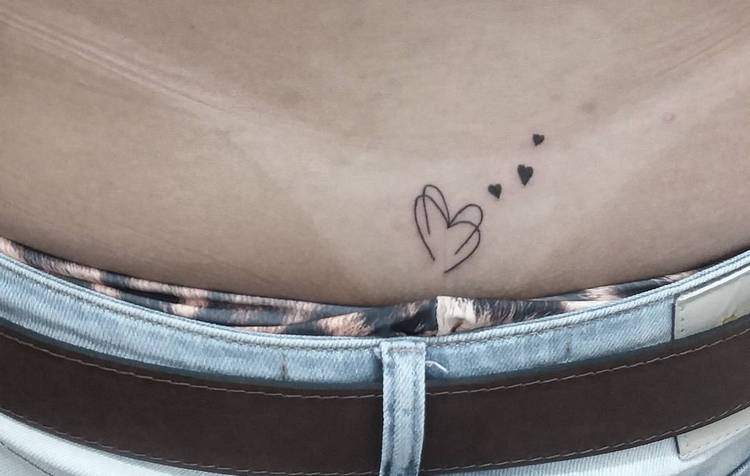

There are no such places, you say, and you'd be wrong. They do exist. You will not see a man (with the exception of the freaks) who will have a nice tattoo above the male thong, in the waist area on the back. I'm sure it's a funny sight.
In the 90s, the waist was one of the most favorite and sought-after places for girls. Where flowers intertwined with tribal patterns made a girl very cool and advanced in the eyes of not only men, but also friends. Especially if it was qualitatively executed by the master tattoo.
Dotwork
Separate attention deserves the style of Dotwork, with which not every tattoo artist is a friend. "Dotwork" in English means dotwork technique.
Thus, applying this technology, the master creates complex drawings, more often in the form of geometric figures, which look best in large formats, as a small Dotwork tattoo no longer makes the proper impression. According to the color of paint here everything is simple: tattoos are performed in black, rarely in red. The master who performs tattoos in this style knows about perfect symmetry and proportions not by hearsay.
Laconic Minimalism
The style, which is now at the peak of popularity among young girls and just creative personalities, is striking for its brevity and elegance. Minimalism is a relatively young style, but has already managed to win the hearts of many.
As is clear from the name, these tattoos are performed on a small scale and with a minimum of colors. Most often it is geometric figures, all sorts of symbols, flowers, animals, etc. Minimalist tattoos are always done with special care. Despite its small size, this style of tattoos is considered one of the most complex in terms of technique.
